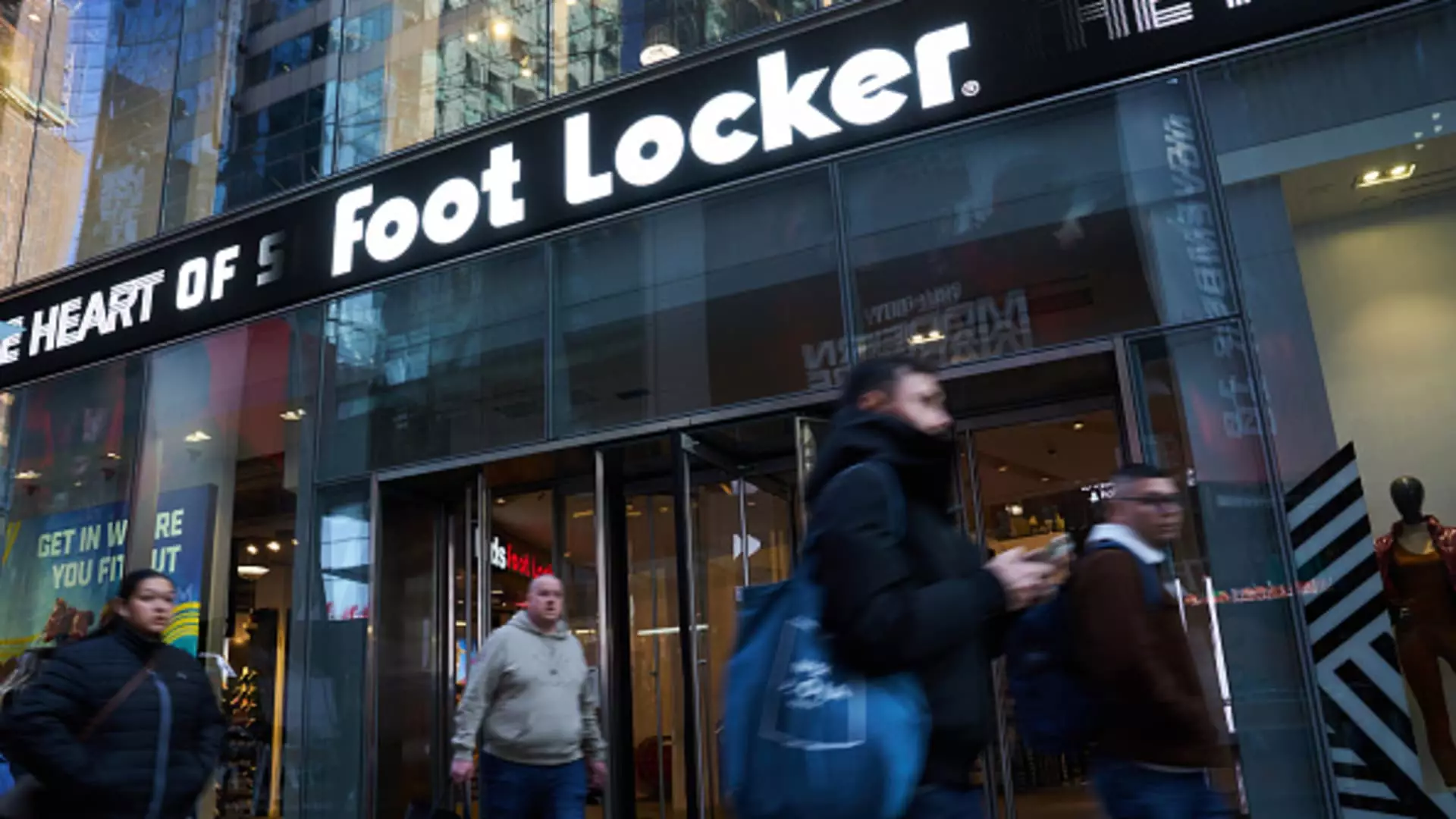Foot Locker has experienced a significant shift in fortunes with the announcement of comparable sales growth for the first time in six quarters. The company’s same-store sales saw an impressive increase of 2.6% in its fiscal second quarter, exceeding analysts’ expectations of a 0.7% uptick. This positive result comes on the back of the company’s vigorous efforts to revamp its stores and enhance the overall customer experience. Despite these encouraging trends, Foot Locker’s shares dropped by about 8% in premarket trading, indicating some underlying investor concerns.
The company’s financial performance also showed improvements compared to analysts’ estimates. Loss per share stood at 5 cents adjusted, outperforming the 7 cents expected, while revenue hit $1.90 billion, surpassing the $1.89 billion anticipated. However, it is essential to note that Foot Locker reported a loss of $12 million, or 13 cents per share, in the three-month period ending Aug. 3, as compared to a loss of $5 million, or 5 cents per share, in the prior year. Excluding one-time items, the company posted a loss of 5 cents per share, demonstrating a mixed financial picture.
Since taking the helm about two years ago, CEO Mary Dillon has orchestrated a comprehensive transformation of Foot Locker. She recognized the rapidly evolving retail landscape and the need for the company to adapt to stay relevant. Dillon focused on rebuilding Foot Locker’s relationship with its primary brand partner, Nike, and initiated significant changes to the aging store fleet. By investing $275 million in store upgrades this year, with plans to remodel two-thirds of its fleet by the end of fiscal 2025, Dillon aimed to enhance the customer experience and drive financial returns.
In addition to store refurbishments, Dillon made strategic decisions to streamline costs at Foot Locker. The company announced the closure of stores and e-commerce operations in select regions, such as South Korea, Denmark, Norway, and Sweden. By partnering with a third party for operations in Greece and Romania, Foot Locker aims to expand its reach while optimizing resource allocation. These cost-cutting measures align with Dillon’s goal of improving overall operational efficiency and profitability.
Foot Locker’s forthcoming relocation of its global headquarters from New York City to St. Petersburg, Florida, signifies a significant strategic move to centralize operations and boost collaboration across different functions and banners. This relocation not only aims to enhance operational efficiencies but also reduce costs in the long term. Despite the financial benefits, Dillon emphasized that the decision was not solely driven by cost savings but also by the opportunity to foster greater teamwork and synergy within the organization.
Foot Locker’s response to evolving consumer preferences and market dynamics has been pivotal in driving sales growth. By focusing on improving the in-store and online customer experience, the company has managed to sustain sales momentum amidst external pressures such as inflation and high interest rates. Dillon’s strategic efforts have resonated well with the core consumer base, leading to positive results and reinforcing Foot Locker’s position in the competitive retail landscape.
Foot Locker’s recent performance highlights the effectiveness of CEO Mary Dillon’s strategic initiatives in steering the company towards a path of recovery and growth. While there are challenges ahead, including evolving consumer behaviors and ongoing market uncertainties, Foot Locker’s focus on enhancing the customer experience and operational efficiency bodes well for its long-term success. By staying agile and responsive to changing market dynamics, Foot Locker is poised to capitalize on emerging opportunities and solidify its position as a leading player in the retail industry.

